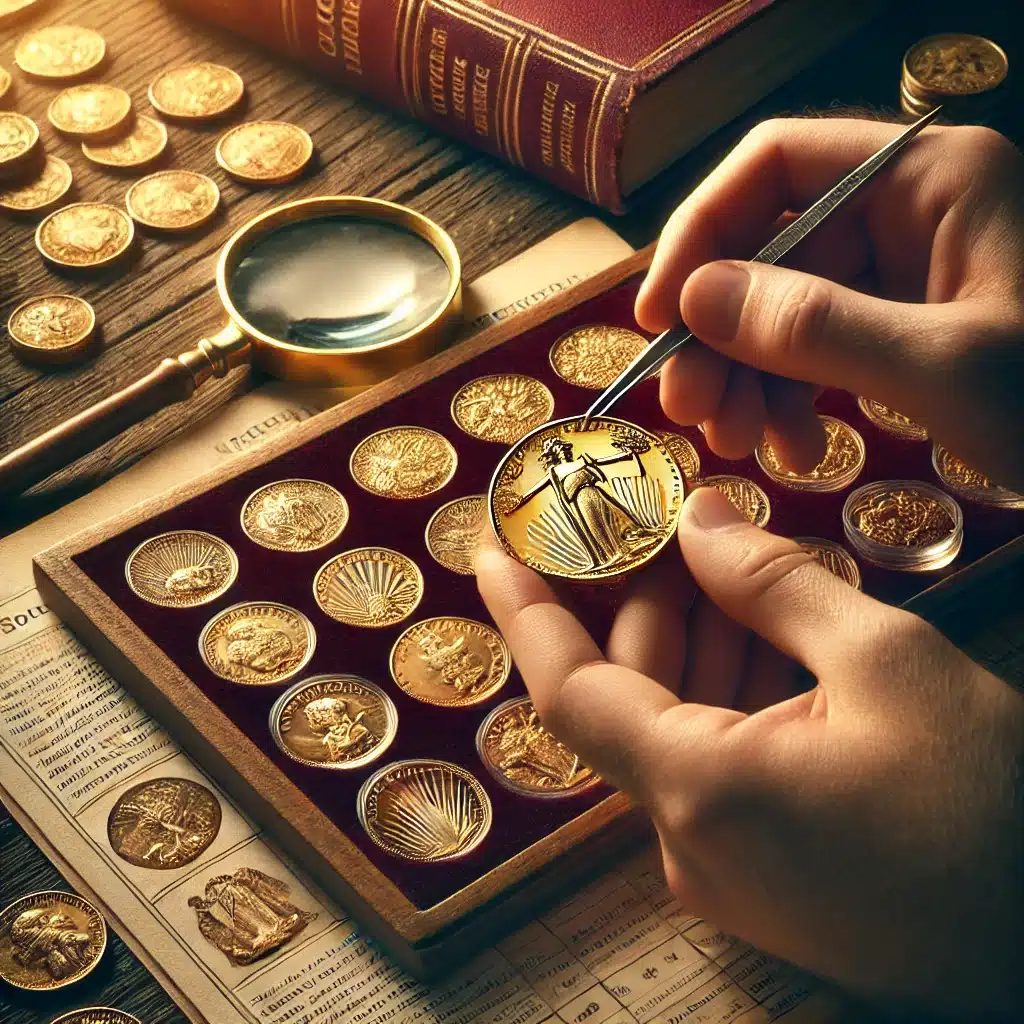Gold coins have captivated collectors and investors for centuries. But what truly makes one gold coin more valuable than another? Whether you’re an experienced numismatist or a beginner exploring the hobby, understanding the factors that drive a coin’s value is essential. This guide dives deep into what makes a gold coin valuable, complete with DIY tips to help you assess coins on your own.
The Story of Clara: A New Collector’s Journey
Clara, a history enthusiast from Boston, received a gold coin as a gift from her grandfather. Intrigued by its beauty and curious about its worth, she began researching the factors that determine a gold coin’s value. Over time, Clara transformed her curiosity into a rewarding hobby, building a collection of rare and valuable coins. If you’re like Clara, eager to uncover the secrets behind gold coin values, this guide is for you.
1. The Key Factors That Make a Gold Coin Valuable
1.1 Rarity
- Definition: Rarity refers to the scarcity of a particular coin. The fewer coins available, the higher the value.
- How to Assess: Research the mintage numbers and historical records. Coins with low production runs or those from defunct mints are often more valuable.
1.2 Historical Significance
- Definition: Coins tied to important historical events or periods often hold higher value.
- Examples:
- Double Eagles minted during the California Gold Rush.
- Gold Sovereigns from Queen Victoria’s reign.
1.3 Condition and Grading
- Definition: The physical state of the coin, including wear and tear, significantly impacts its value.
- Grading Systems: Professional coin grading services like PCGS and NGC use a scale from 1 (poor) to 70 (perfect).
- DIY Tip: Use a magnifying glass to inspect for scratches, discoloration, and edge wear.
1.4 Metal Content
- Definition: The purity and weight of gold in the coin contribute to its intrinsic value.
- Common Standards:
- 22K (91.67% gold) coins like the American Gold Eagle.
- 24K (99.99% gold) coins like the Canadian Gold Maple Leaf.
- DIY Tip: Use a jeweler’s scale to measure weight and calculate gold content.
1.5 Demand Among Collectors
- Definition: Popularity within the numismatic community can drive up a coin’s market value.
- Factors Influencing Demand:
- Unique designs.
- Limited editions.
- Coins from historically significant mints.
2. DIY: How to Evaluate a Gold Coin’s Value
2.1 Check for Hallmarks and Stamps
- Look for purity marks (e.g., 22K, 24K) and mint marks.
- Common mint marks in the USA include “S” for San Francisco and “D” for Denver.
2.2 Inspect the Design
- Unique or iconic designs often indicate higher value.
- Examples: Saint-Gaudens Double Eagles or Indian Head Gold Coins.
2.3 Research Mintage Numbers
- Use online databases and coin catalogs to determine how many coins were minted.
2.4 Get a Professional Appraisal
- For high-value coins, consult a certified numismatist or a professional appraiser.
3. Common Mistakes to Avoid When Assessing Gold Coins
3.1 Ignoring Documentation
- Original certificates, receipts, and packaging can add significant value.
3.2 Overlooking Condition
- Even minor scratches can decrease a coin’s grade and value.
3.3 Assuming All Old Coins Are Valuable
- Age alone does not determine value; rarity and condition are key factors.
3.4 Neglecting Market Trends
- Stay updated on current gold prices and collector demand to avoid undervaluing your coins.
4. Popular Rare Gold Coins for Collectors
4.1 Saint-Gaudens Double Eagle (1907-1933)
- Known for its exquisite design and historical significance.
4.2 Indian Head Gold Coins (1908-1929)
- Unique Native American design appeals to collectors.
4.3 Liberty Head Gold Coins (1838-1907)
- Represent America’s expansion era.
4.4 Gold Dollars (1849-1889)
- A connection to the California Gold Rush.
5. Building Your Collection: Tips for Success
5.1 Start Small
- Begin with affordable, yet historically significant coins.
5.2 Join Collector Communities
- Forums, trade shows, and clubs are great places to network and learn.
5.3 Invest in Proper Storage
- Use coin holders, capsules, or albums to protect your collection from damage.
5.4 Stay Informed
- Read books, follow numismatic blogs, and attend seminars to deepen your knowledge.
Clara’s Favorite Find
After months of research, Clara discovered a rare 1854 Type 2 Gold Dollar at a local estate sale. The coin’s low mintage and excellent condition made it a centerpiece of her collection. Inspired by her success, Clara continues to explore the fascinating world of gold coins, each piece adding a new story to her growing treasure trove.
Conclusion: The Art of Collecting Valuable Gold Coins
Understanding what makes a gold coin valuable is both an art and a science. By focusing on factors like rarity, condition, and historical significance, you can build a collection that is not only valuable but also deeply rewarding.
What’s your favorite gold coin? Share your stories and tips in the comments below. Let’s inspire each other to uncover the hidden treasures of the numismatic world!
